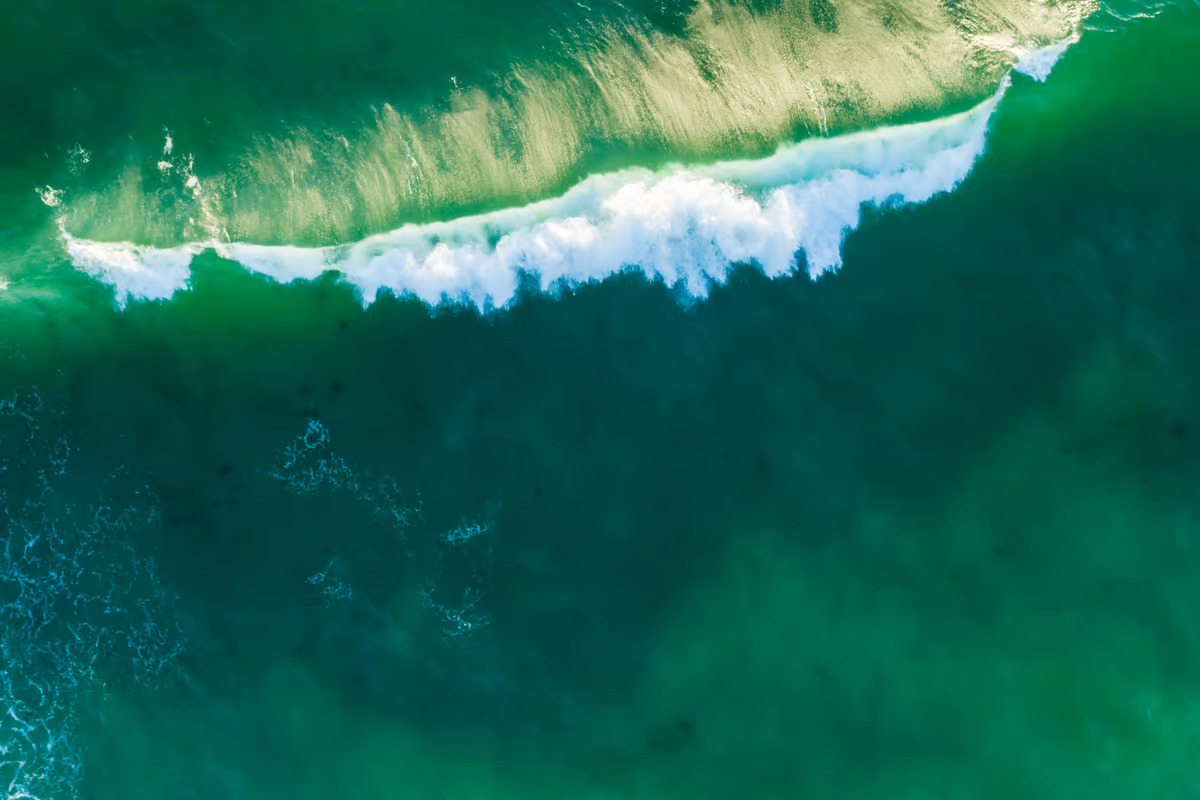 A new study has analyzed 20 years of data and found that human-generated climate change has changed the color of our oceans. Depositphotos
A new study has analyzed 20 years of data and found that human-generated climate change has changed the color of our oceans. Depositphotos
–
For decades, satellites have been measuring the color of the Earth’s oceans, collecting data on the color of light reflecting off the water. One satellite in particular, the Aqua satellite, with its Moderate Resolution Imaging Spectroradiometer (MODIS) sensor, has recently completed 20 years of collecting high-quality global ocean-color data. A new study led by MIT and the UK’s National Oceanography Center has examined this data and detected changes in ocean color over the past 20 years that can’t be explained by natural, year-to-year variability alone.
“I’ve been running simulations that have been telling me for years that these changes in ocean color are going to happen,” said Stephanie Dutkiewicz, one of the study’s co-authors. “To actually see it happening for real is not surprising, but frightening. And these changes are consistent with man-induced changes to our climate.”
The ocean’s color reflects the life that lives beneath its upper layers. The surface ocean extends from zero to a depth of about 330 ft (100 m) across the entire ocean. It’s where the ocean meets the atmosphere and absorbs carbon dioxide from the air.
Generally, deep blue water contains very little life, whereas greener water indicates the presence of ecosystems, mainly phytoplankton, tiny plant-like microbes containing the green pigment chlorophyll. Phytoplankton forms the foundation of the aquatic food web, feeding everything from microscopic zooplankton to shellfish that are then eaten by larger fish and marine mammals. Without phytoplankton, many oceanic food webs would collapse, greatly affecting marine life and humans who rely on fish for food.
Beyond providing nutrients, though, phytoplankton creates oxygen through photosynthesis that’s released into the ocean and atmosphere, and soak up carbon dioxide. So, monitoring phytoplankton across the surface oceans is a good way of evaluating how they’re responding to climate change. Traditionally, measuring chlorophyll in phytoplankton gives a good indication of long-term trends in ocean-color. However, studies have found that more than 30 years of satellite data are required to detect climate-change-driven chlorophyll trends.
In 2019, Dutkiewicz and her colleagues developed a new model showing that the natural variation in ocean colors is much smaller than that seen in chlorophyll, meaning that climate-change-driven changes should be easier to detect by including ocean colors in addition to the two traditionally used to estimate chlorophyll. It would also require 20 years of data, not 30.
“So I thought, doesn’t it make sense to look for a trend in all these other colors, rather than in chlorophyll alone?” said BB Cael, the lead author of the study. “It’s worth looking at the whole spectrum, rather than just trying to estimate one number from bits of the spectrum.”
MODIS takes measurements in several wavebands within the visible spectrum. Analyzing data from 2002 to 2022 using seven ocean colors the researchers could see how the colors changed from region to region over a given year, providing an overview of natural variations. Then, looking at how these variations changed over 20 years, their analysis demonstrated a clear trend, above the normal year-to-year variability.
This real-world data was compared with the 2019 model developed by Dutkiewicz, which simulated the Earth’s oceans under two scenarios: one with the addition of greenhouse gases and one without. The greenhouse-gas model predicted that a significant trend would appear within 20 years and cause changes to ocean color in about half of the world’s surface oceans. The model prediction and the real-world data were almost identical, with color change seen in over 56% of the world’s oceans. Tropical oceans around the equator in particular were found to have turned greener over time.
“This suggests that the trends we observe are not a random variation in the Earth system,” Cael said. “This is consistent with anthropogenic climate change. This gives additional evidence of how human activities are affecting life on Earth over a huge spatial extent.”
The researchers say the study’s findings show that measuring ocean colors beyond chlorophyll might provide scientists with a faster, more sensitive way of detecting how climate change is affecting marine ecosystems.
“The color of our oceans has changed,” said Dutkiewicz. “And we can’t say how. But we can say that changes in color reflect changes in plankton communities, that will impact everything that feeds on plankton. It will also change how much the ocean will take up carbon, because different types of plankton have different abilities to do that. So, we hope people take this seriously. It’s not only model that are predicting these changes will happen. We can now see it happening, and the ocean is changing.”
The researchers say that ongoing research is needed, merging data from multiple satellites to shed light on what the trends in their study indicate about precisely how surface-ocean ecology is changing.
The study was published in the journal Nature. Source: MIT
–
























